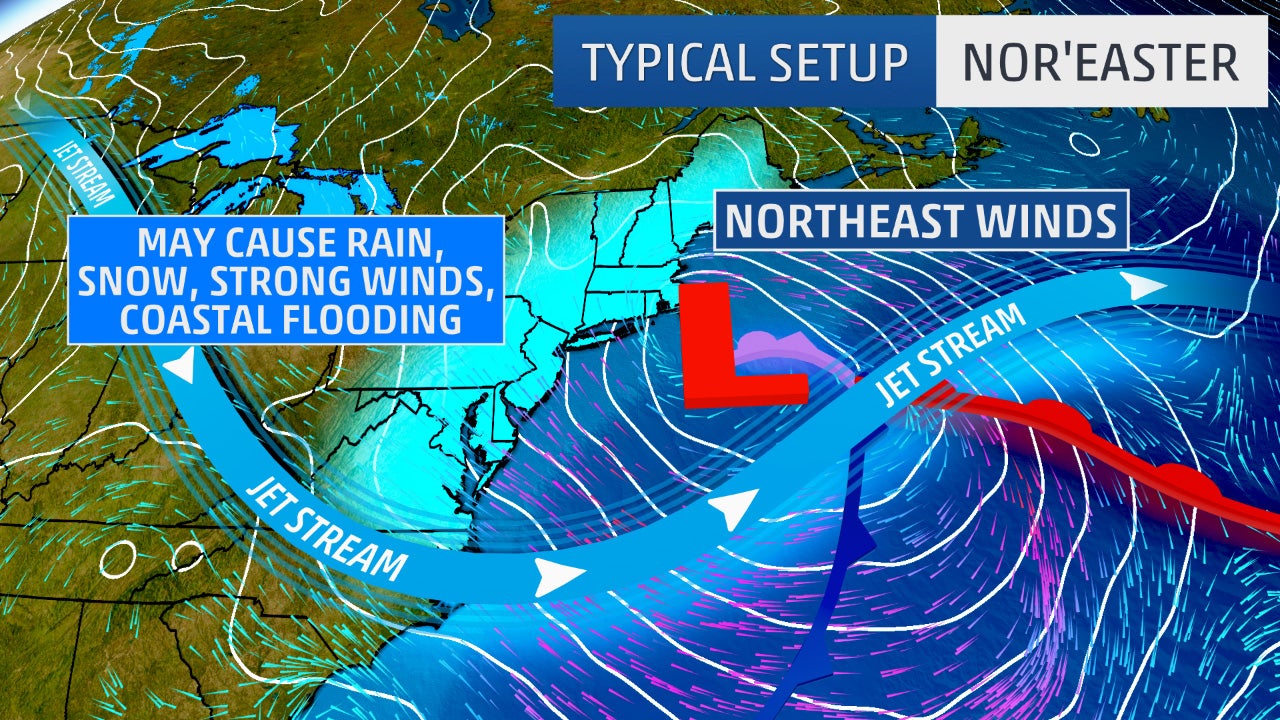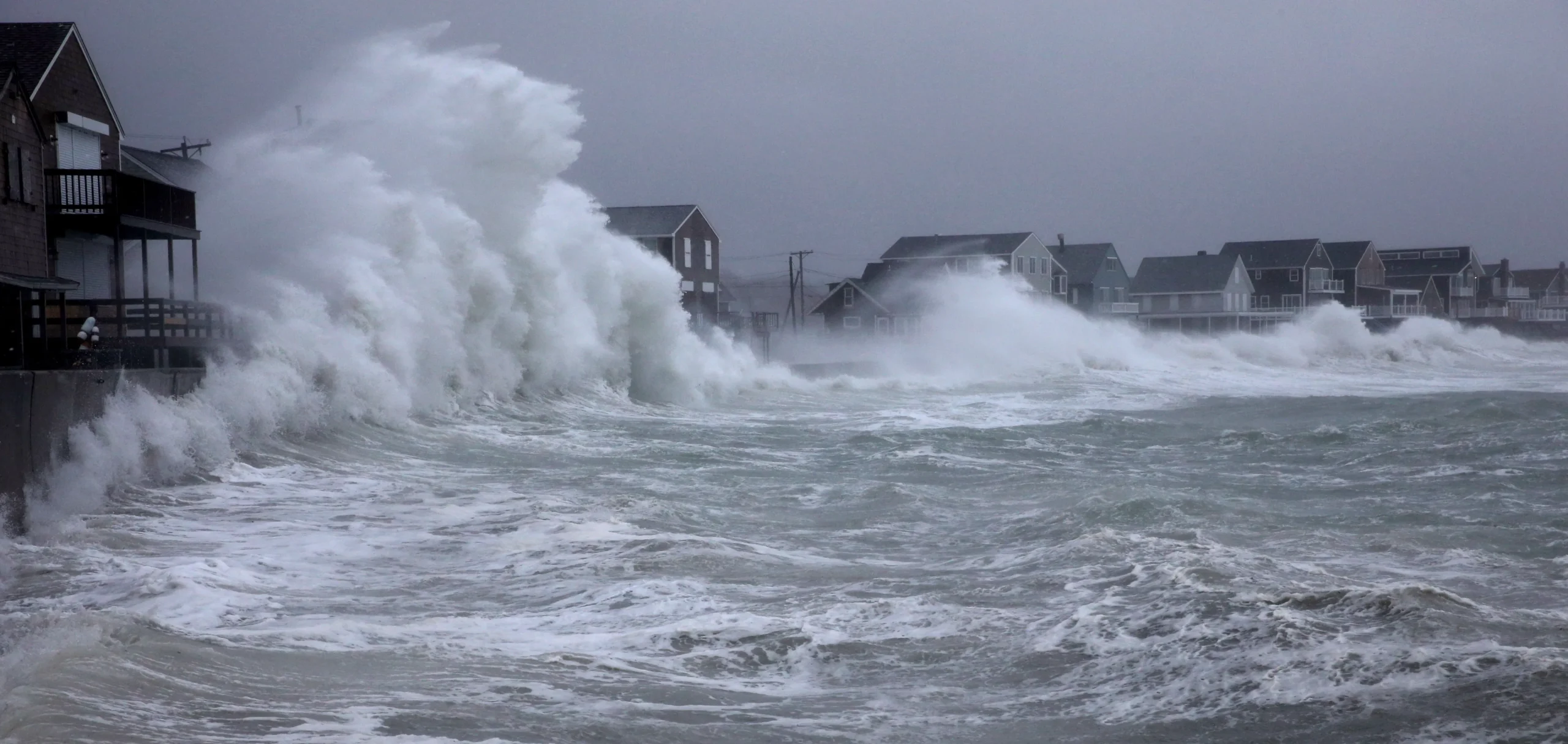
What Is a Nor’easter?
A Nor’easter is a powerful storm that forms along the East Coast of the United States, often during the winter months. These storms get their name from the strong northeastern winds that blow in from the ocean as they move up the coast. Nor’easters are fueled by a combination of cold air from the north and warm air from the Atlantic Ocean, creating intense weather conditions that can last for days.
Nor’easters typically bring:
- Heavy snow or rain
- Strong winds
- Coastal flooding
- Frigid temperatures
- Dangerous travel conditions
While Nor’easters are most common between October and April, they can occur year-round and are notorious for causing some of the worst winter weather in the Northeast.
How Do Nor’easters Form?
Nor’easters form when cold Arctic air from Canada collides with warmer air from the Atlantic Ocean. This clash of air masses creates an area of low pressure, which strengthens as it moves up the East Coast. As the storm moves northward, it draws in moisture from the Atlantic, fueling the heavy precipitation that often accompanies Nor’easters.
The Key Ingredients for a Nor’easter:
- Cold air from Canada or the Arctic
- Warm, moist air from the Atlantic Ocean
- An area of low pressure forming along the coast
- Strong winds blowing from the northeast
The interaction between the cold and warm air masses fuels the storm, often resulting in heavy snow, freezing rain, or downpours. The strongest Nor’easters can produce blizzard-like conditions, with wind speeds exceeding 58 miles per hour, and cause coastal flooding as powerful winds push ocean water inland.
What Makes Nor’easters So Dangerous?

Nor’easters are dangerous because they can bring extreme weather conditions, including heavy snow, strong winds, and coastal flooding, all at once. The combination of these factors can lead to severe damage, widespread power outages, and dangerous travel conditions. Here’s why Nor’easters are particularly hazardous:
1. Heavy Snow and Blizzard Conditions
Many Nor’easters produce heavy snowfall, with some storms dumping more than a foot of snow in a single event. In extreme cases, these storms can result in blizzard conditions, making travel nearly impossible due to low visibility and high winds.
2. Coastal Flooding
Coastal areas are especially vulnerable to Nor’easters, as the strong northeastern winds push water from the Atlantic inland. This storm surge can lead to severe coastal flooding, damaging homes, roads, and infrastructure. Cities like Boston, New York, and Atlantic City are often at risk during these storms.
3. Power Outages
The strong winds and heavy snow or rain associated with Nor’easters often bring down trees and power lines, leading to widespread power outages. In cold weather, these outages can be particularly dangerous, leaving homes without heat or electricity for extended periods.
4. Dangerous Travel Conditions
Nor’easters can cause dangerous travel conditions, both on the roads and in the air. Heavy snow and ice make driving treacherous, while high winds and poor visibility can ground flights and shut down airports. Major highways and interstates can be affected, leading to widespread travel disruptions.
Famous Nor’easters in History

Nor’easters have been responsible for some of the most memorable and destructive storms in U.S. history. These storms are notorious for their intensity and the damage they leave in their wake. Here are a few famous Nor’easters:
1. The Great Blizzard of 1888
One of the most famous Nor’easters in U.S. history, the Great Blizzard of 1888, dumped over 50 inches of snow in parts of the Northeast. Wind gusts reached up to 80 miles per hour, creating massive snowdrifts and shutting down entire cities. New York City was brought to a standstill for days, and over 400 people lost their lives.
2. The “Storm of the Century” (1993)
Another powerful Nor’easter, the Storm of the Century in 1993, brought blizzard conditions from the Gulf Coast all the way to the Northeast. The storm caused billions of dollars in damage and resulted in over 300 deaths. It remains one of the most destructive storms ever to hit the East Coast.
3. The Blizzard of 2016
The Blizzard of 2016 was a major Nor’easter that buried parts of the Northeast under more than two feet of snow. New York City and Washington, D.C., were particularly hard hit, with widespread power outages and transportation shutdowns. The storm caused over $3 billion in damage.
How to Prepare for a Nor’easter
If you live in a region that’s prone to Nor’easters, it’s important to be prepared before a storm strikes. By taking the right precautions, you can protect your home, ensure your safety, and minimize potential damage. Here are some expert-recommended steps for preparing for a Nor’easter:
1. Secure Your Home
Before the storm hits, secure any outdoor items, such as patio furniture, grills, and trash cans, which can be blown away by high winds. Check that your windows and doors are sealed properly to prevent cold air or water from getting inside.
2. Stock Up on Supplies
Make sure you have enough supplies to last through the storm. This includes food, water, batteries, flashlights, and extra blankets in case of power outages. If you rely on medications, ensure you have enough to last several days.
3. Prepare for Power Outages
Since Nor’easters often cause power outages, it’s important to be prepared. Consider purchasing a generator to keep essential appliances running, such as your refrigerator and heating system. If a generator isn’t an option, have extra blankets, warm clothes, and a plan for staying warm without electricity.
4. Avoid Traveling During the Storm
If a Nor’easter is on its way, avoid traveling during the storm. Roads can quickly become dangerous due to snow, ice, and poor visibility, and flights may be canceled. If you must travel, check weather and road conditions before heading out, and keep an emergency kit in your car.
FAQ
| Question | Answer |
|---|---|
| What is the difference between a Nor’easter and a hurricane? | While both are powerful storms, a Nor’easter forms in colder climates and is fueled by the clash of cold and warm air masses. Hurricanes, on the other hand, form in tropical climates and are fueled by warm ocean water. |
| When is Nor’easter season? | Nor’easters are most common between October and April, but they can occur at any time of the year. |
| How long do Nor’easters last? | Nor’easters can last for several hours to several days, depending on the strength of the storm and how quickly it moves up the coast. |
| What kind of damage can a Nor’easter cause? | Nor’easters can cause damage through heavy snow, ice, strong winds, and coastal flooding. This can result in power outages, downed trees, damaged homes, and transportation disruptions. |
| What should I do if my home is damaged by a Nor’easter? | If your home is damaged by a Nor’easter, contact a storm damage restoration service, like Citywide Mold Mitigation, to assess the damage and begin repairs immediately. |
If your home has been damaged by a Nor’easter, contact Citywide Mold Mitigation for expert storm damage and mold remediation services to restore your home to its original condition.

